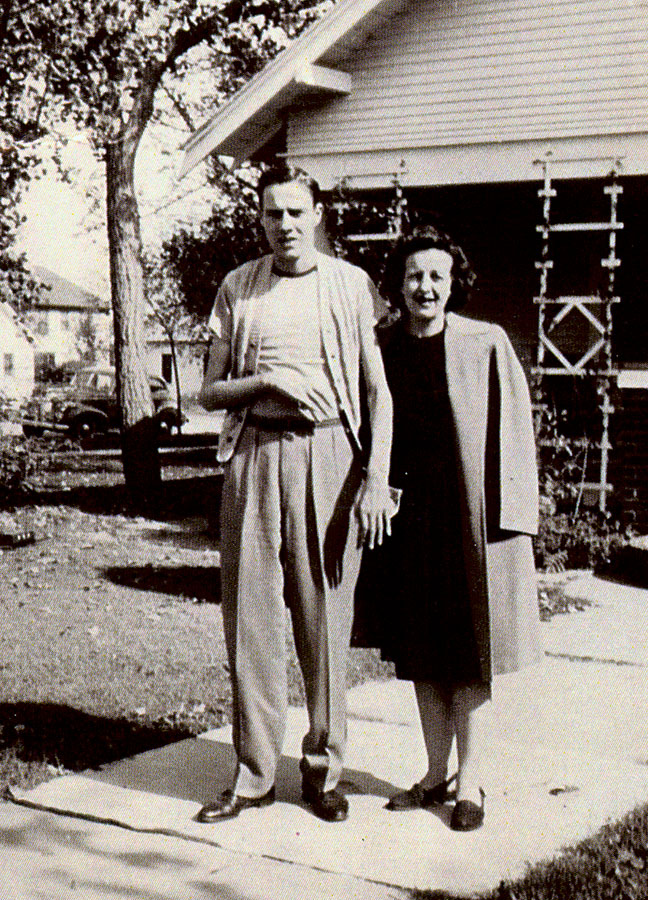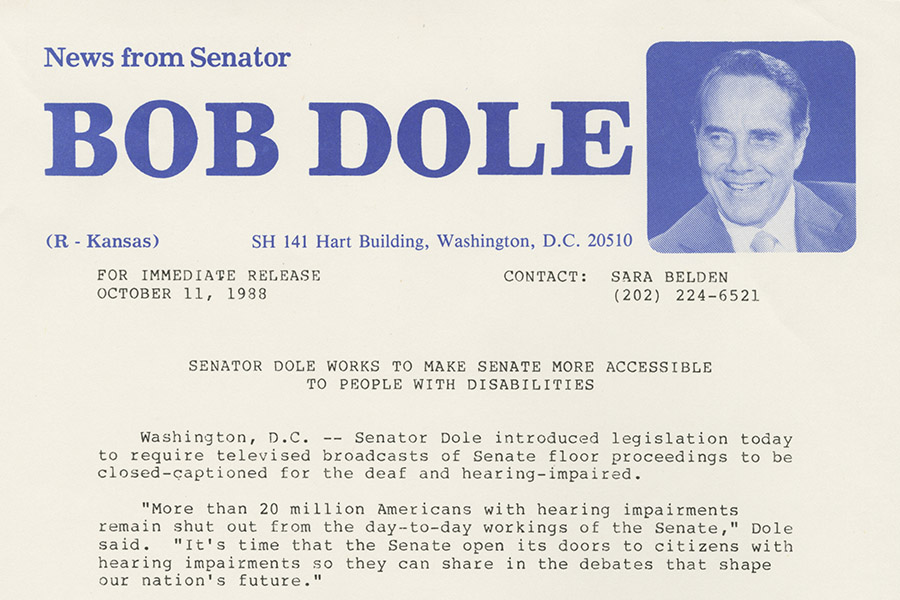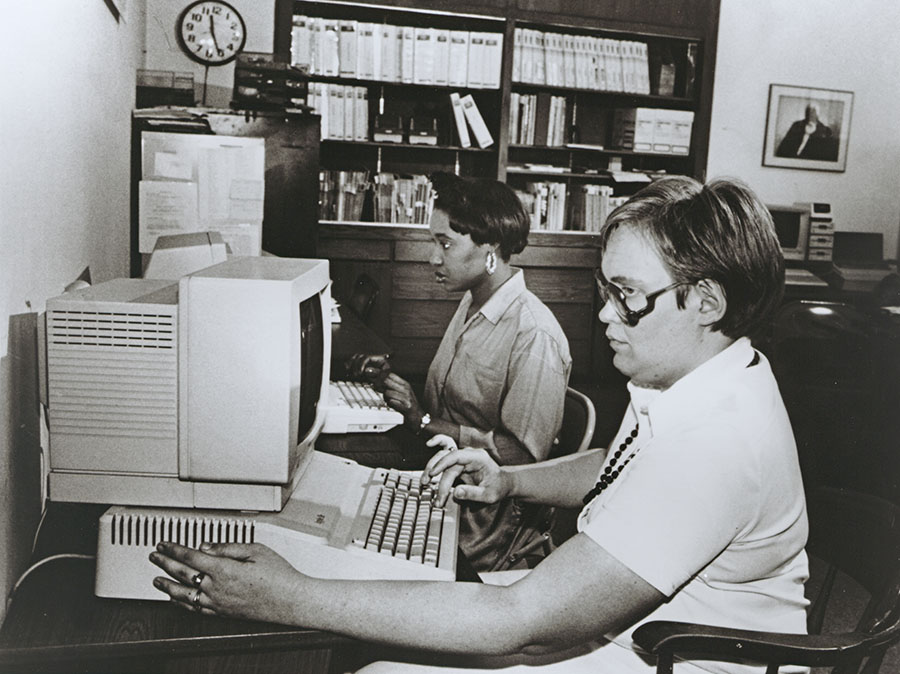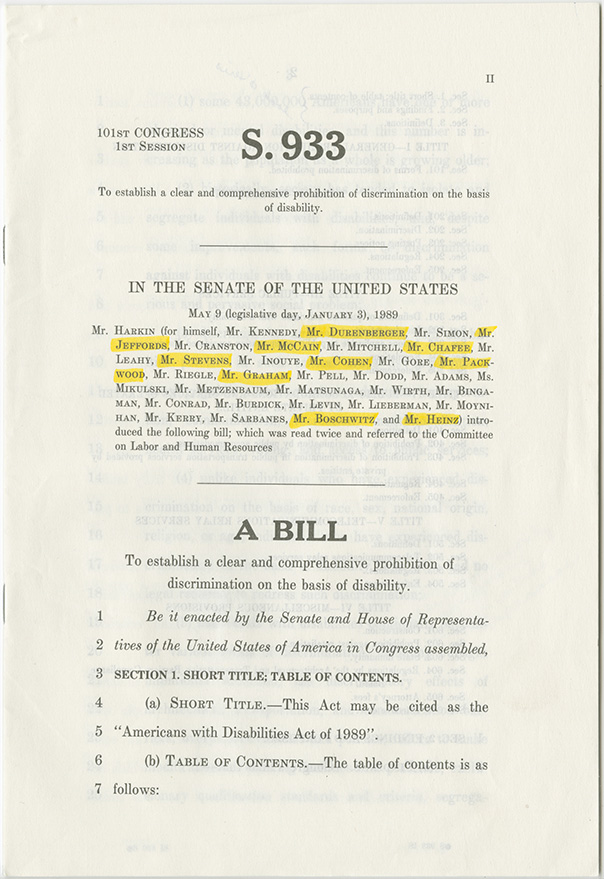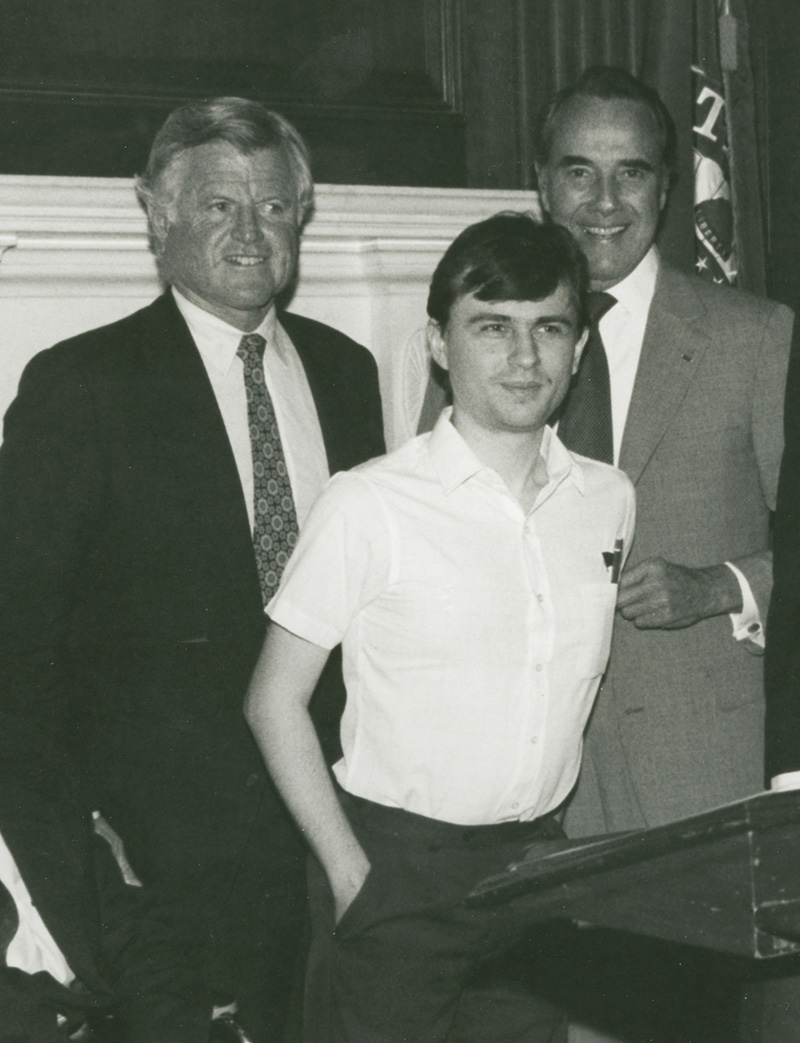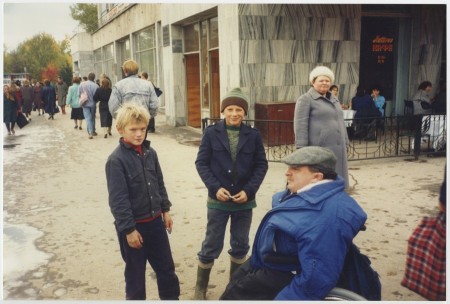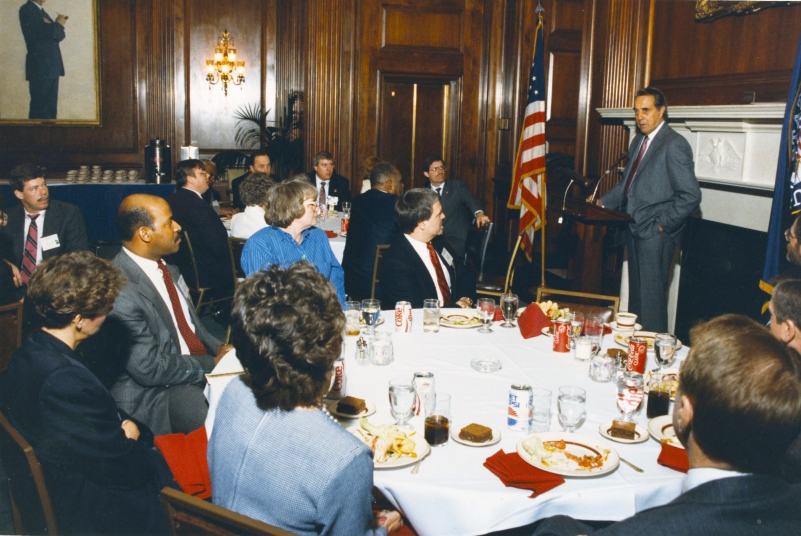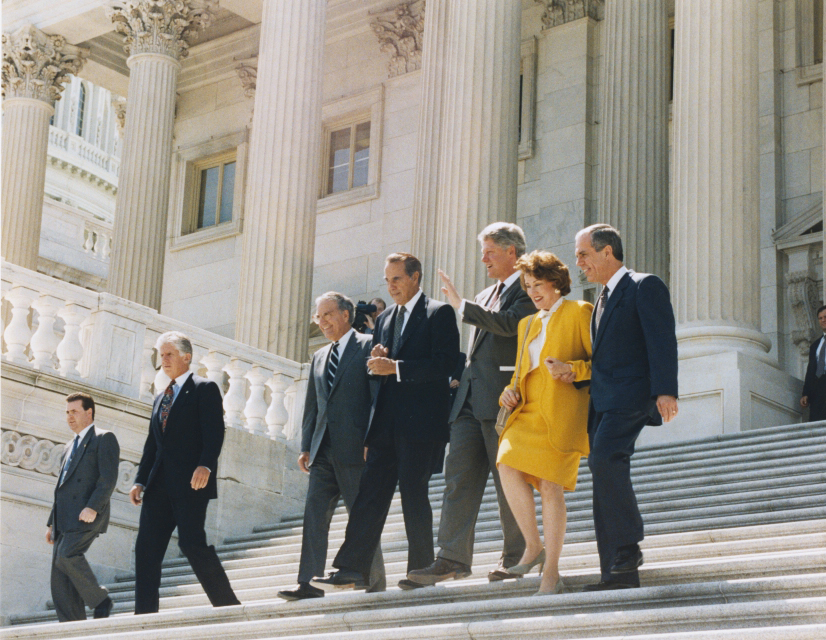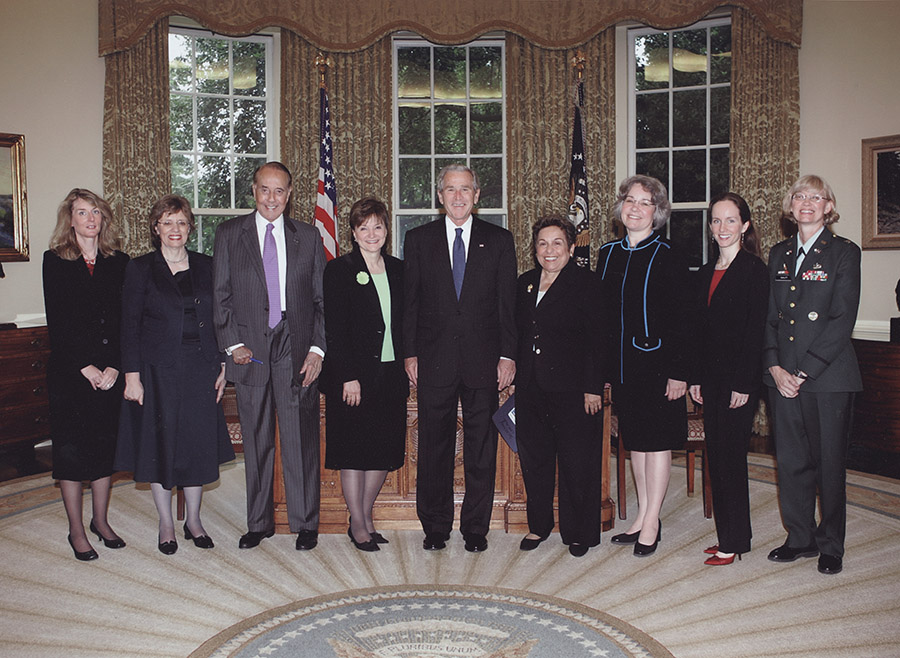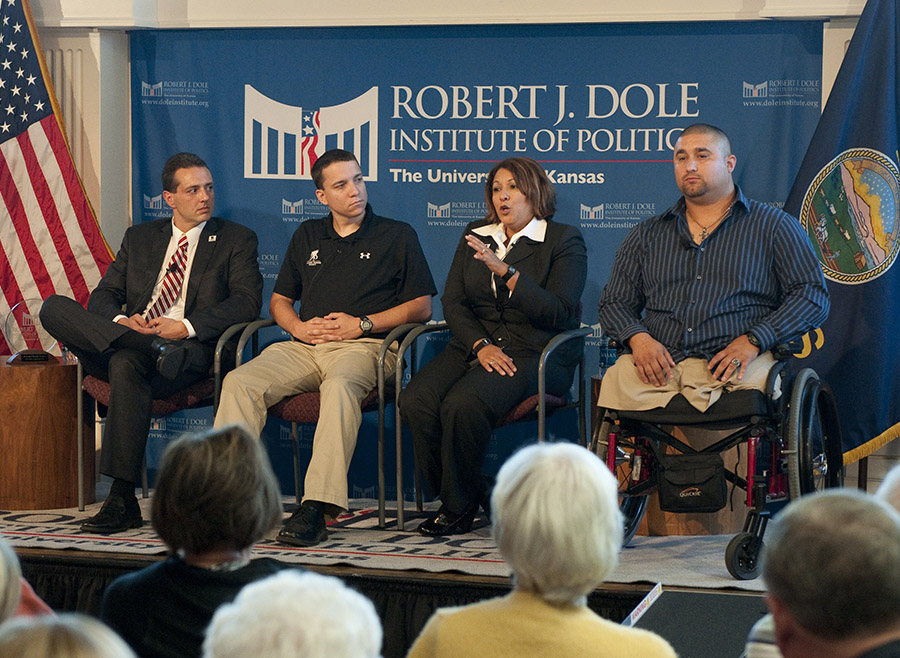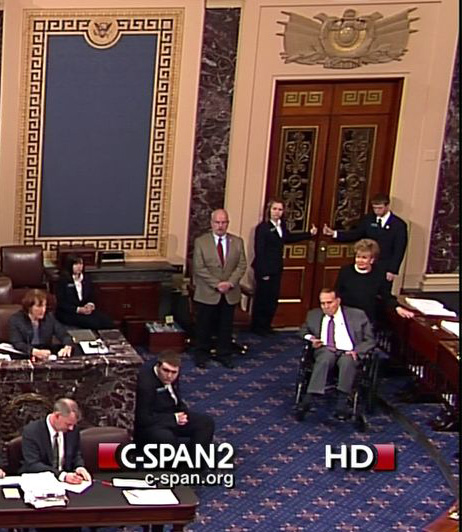Introduction
“Under the ADA we are all winners”
-Senator Bob Dole
from Statement on Final Passage of the ADA, dated July 12, 1990
Mention Bob Dole’s name to most people and their thoughts often turn to his World War II service and the combat injuries that almost took his life.
Tested in body and character, Dole found new strengths and aspirations. Although he gave up his dream of becoming a medical doctor, Dole earned a law degree and entered politics in the 1950s.
He devoted much of his political career to fighting for people with disabilities—a large, diverse, and determined group.
Bob Dole set out to change their story, just as he had changed his own to become, as he stated in 1996, “the most optimistic man in America.”
Resilient, flexible—and stubborn, when he needed to be—Bob Dole helped establish and ensure disability rights as a political leader. He continues doing so as a private citizen.
More than any other law, the Americans with Disabilities Act of 1990 (ADA) represents Dole’s reputation.
The ADA proclaims disability will be no barrier to individual opportunity and community participation.
The ADA recognizes people with disabilities as full American citizens with the right to respect and dignity in their present and future lives.
(ADA TITLE I: EMPLOYMENT)
(ADA TITLE II: LOCAL AND STATE GOVERNMENT SERVICES, PROGRAMS, ETC.)
(ADA TITLE III: PRIVATE ENTITIES)
(ADA TITLE IV: TELECOMMUNICATIONS)
A Vision for Change on the National Stage

Dole's First Senate Speech
On April 14, 1969, Bob Dole gave his first speech on the floor of the US Senate. It was 24 years to the day since Dole was wounded in World War II.
Although the date had great personal significance for the senator, he put the concerns of other people first. In his speech, Dole called for public and private-sector commitments to improving the lives of Americans with disabilities.
A Common Goal
Dole’s “no boundaries” definition of people with disabilities helped him connect with diverse organizations and individuals working for disability rights in the late 1960s and early 1970s.
In previous eras, most disability rights advocacy came from groups representing those who shared a common condition — for example, people who were blind or people with polio.
The time had come for people with disabilities to affirm their common experience of discrimination, their common history of struggle, and their common goal of independence.
Universal Concerns
Dole’s speech also emphasized the universal relevance of disability concerns for people with and without disabilities. He advocated better communication and cooperation among these groups.
Above all, Dole sought full, participatory lives for people with disabilities.
we have only begun to help guarantee that each handicapped person and his family enjoy complete dignity, independence, and security.”
-Senator Bob Dole’s speech on the Senate floor
April 14, 1969
Disability Rights are Civil Rights
 KU students demonstrate for civil rights at a sit-in in Strong Hall, 1965. Courtesy KU University Archives.
KU students demonstrate for civil rights at a sit-in in Strong Hall, 1965. Courtesy KU University Archives.
The disability rights movement emerged during the 1960s, a time of unprecedented action for civil rights in the US. Bob Dole became a national political leader in this pivotal period. As a congressman representing Kansas, Dole voted for the 1964 Civil Rights Act and the 1965 Voting Rights Act. These laws helped open the doors to change on many fronts.
Two legendary people with disabilities inspired by the social movement atmosphere were Ed Roberts and Judy Heumann. Both survived childhood polio; both used wheelchairs. Visible, vocal, and influential disability rights leaders, they followed the examples of the African American freedom struggle and the movement for women’s rights.
Thanks to Roberts, Heumann, and many others, “Independent Living” (IL) became a new philosophy for people with disabilities. Independent living meant that people with disabilities would make as many of their own decisions as possible—about their rehabilitation, employment, healthcare, and housing.
The IL movement became a force for change throughout the US aand had an impact in Lawrence, Kansas, where activists like Roger Williams found an ally in Bob Dole.
Ed Roberts
Ed Roberts (1939-1995) enrolled at the University of California, Berkeley, in 1962 after fighting administrators who saw him only as a “cripple.” He helped found the Independent Living Movement. In 1975, Roberts became director of California’s rehabilitation agency.
Judy Heumann
Judy Heumann (1947- ) overcame job discrimination in New York City, her hometown. A qualified public school teacher, Heumann was denied employment simply because she used a wheelchair. She founded the Disabled in Action organization in 1970.
Roberts and Heumann achieved global recognition with the establishment of the World Institute on Disability in 1983. Currently, Heumann is special advisor for international disability rights in the US State Department.
Roger Williams
Roger Williams (1934-1993) founded Independence, Inc. in Lawrence, Kansas, in 1978. This was Kansas’ first independent living center. He also led efforts to ensure compliance with the 1973 Rehabilitation Act at the University of Kansas. A KU Law School alumnus, Williams acquired muscular dystrophy in adulthood and became a wheelchair user.

Special Olympics was founded to provide opportunities for children with intellectual disabilities. In this photo, Senator Dole congratulates a Special Olympics medal winner, 1970.
The Rehabilitation Act of 1973
The Air Carrier Access Act
By the 1970s, Americans were traveling more by air. Still, many passengers with disabilities faced restrictions on commercial aircraft.
Bob Dole authored the Air Carrier Access Act of 1986 (ACAA). The law stated airlines could not refuse to serve people simply because of their disabilities. The ACAA also banned higher airfare rates for people with disabilities.
The 1970 Developmental Disabilities Act
The 1970 Development Disabilities Act is one of several laws stemming from greater concern for the lives of people with intellectual disabilities. There were crucial efforts by parents and family members of people with developmental disabilities to call attention to this population’s needs.
Engaging the Public with the Process
In the political arena, Dole worked within the Republican Party to promote disability-related issues, as well as to attract people with disabilities to the party.
Dole wanted people with disabilities to be able to participate readily in their government and its processes.
Physical Access
One way Dole facilitated this was to encourage improved physical access to government facilities, such as the US Capitol and Senate buildings. In pursuit of this goal, Dole sustained a decades-long correspondence with George M. White, the architect of the Capitol.
Closed Captioning
Dole also advocated strongly for closed-captioning service within the Senate and for national public and commercial broadcasts.
With passage of the ADA in 1990, telecasts of US Senate proceedings began using closed-captioning technology. Dole authored Senate Res. 13, which mandated this procedure.
-Bob Dole’s 1984 endorsement of the Reagan-Bush ticket.

In 1983, Dole announced establishment of the Dole Foundation for Employment of Persons with Disabilities. Its mission was to help disabled Americans earn economic independence through job creation, training, and placement. It also assisted disabled entrepreneurs. Later efforts included making private-sector employers more aware of the advantages of hiring people with disabilities.
The Dole Foundation sought recognition across America for its expertise on employment of people with disabilities. The foundation closed operations in 1998 after Paul Hearne, its charismatic president, died suddenly.
Voices and Allies

Bob Dole was a political leader with national influence. He shared his advocacy efforts with people and organizations representing a wide range of American identities, viewpoints, and concerns.
Constituents
Senator Dole learned much about living with disability from his constituents. In personal letters, many of them handwritten, these citizens advocated for themselves and for others.
While many letters came from Kansans, people throughout the nation thought it worthwhile to write to Bob Dole. Their correspondence educated, moved, and motivated him.
Legislative Aides
Some of Dole’s legislative aides, including Christina Bolton, Maureen “Mo” West, Mary Wheat, Judy Brotman, and Alec Vachon, specialized in disability policy.
They helped the senator stay connected to disability activist networks, kept him up to date on legislative developments, and offered policy suggestions.
Advocates
For disability rights leaders, supporting new government policies was just one part of their work. They also needed to defend legislative victories they had achieved.
Changes in presidential administrations, shifts in congressional majorities, challenges in the courts—all these factors, and more, impact a law’s effectiveness and enforcement.
Bob Dole, statement on the Americans with Disabilities Act (S.933)
September 6, 1989
Dole championed S.933 as a “good example of Bi-Partisanship in action.” That version of the ADA passed the Senate in September 1989, with 76 “yes” votes.
Personal Experience into National Advocacy
Journalist Joseph Shapiro, in his 1993 book No Pity: People with Disabilities Forging a New Civil Rights Movement, called the millions of US citizens who have had personal experience with disability the “hidden army for civil rights.”
This “army” has included several current and former political leaders. Some, like Bob Dole (paralysis) and Tony Coelho (epilepsy), have disabilities. Others have family members with disabilities: one of Lowell Weicker’s sons has Down syndrome. Orrin Hatch’s brother-in-law had polio. Tom Harkin had a brother who is deaf; one of his nephews is quadriplegic. The late Edward Kennedy’s sister Rosemary had intellectual disabilities and his son, Ted Kennedy, Jr., lost a leg to cancer.
The death of his daughter Robin, from leukemia, was one of several experiences that made President George H.W. Bush interested in disability rights. Another was his late uncle John Walker’s struggle with polio.
When Sandra Jensen, a woman with Down syndrome, met with President Bush, her strength and independence impressed him. Like so many others in Washington, Bush drew on these interactions to bring a personal dimension to the ADA’s political drama.
Ultimately, the ADA’s passage also depended on Bob Dole’s effective negotiations with the executive branch and President George H. W. Bush. Though the two had a history of political rivalry, as Republican Senate Leader Dole supported President Bush, and they shared commitment to disability rights and other issues. When President Bush signed the ADA into law in 1990, he was putting his name on legislation that testified to Dole’s political skills and personal character.
Things had been more challenging for Dole during Ronald Reagan’s presidency. He had to balance disability rights advocacy with his budget-cutting duties as chair of the Senate Finance Committee. Many disability rights activists saw the cuts as threats to Section 504 and other laws benefiting people with disabilities.
As Reagan’s vice president, George H. W. Bush developed a strong interest in disability policy. C. Boyden Gray, one of Bush’s advisers, helped the vice president align conservative principles with disability rights. The Reagan-Bush-Dole approach was to use government to create opportunities for people with disabilities to contribute to the US economy as workers. This approach struck a chord with disability rights activists who carried signs with the slogan “We want to be tax payers, not tax users.”
When he became President in 1989, George H. W. Bush was ready to team up with Bob Dole on behalf of people with disabilities.
-Bob Dole, from remarks “The Americans with Disabilities Act (S. 933) September 6, 1989”
-President George H.W. Bush, on the signing of the ADA legislation, July 26, 1990
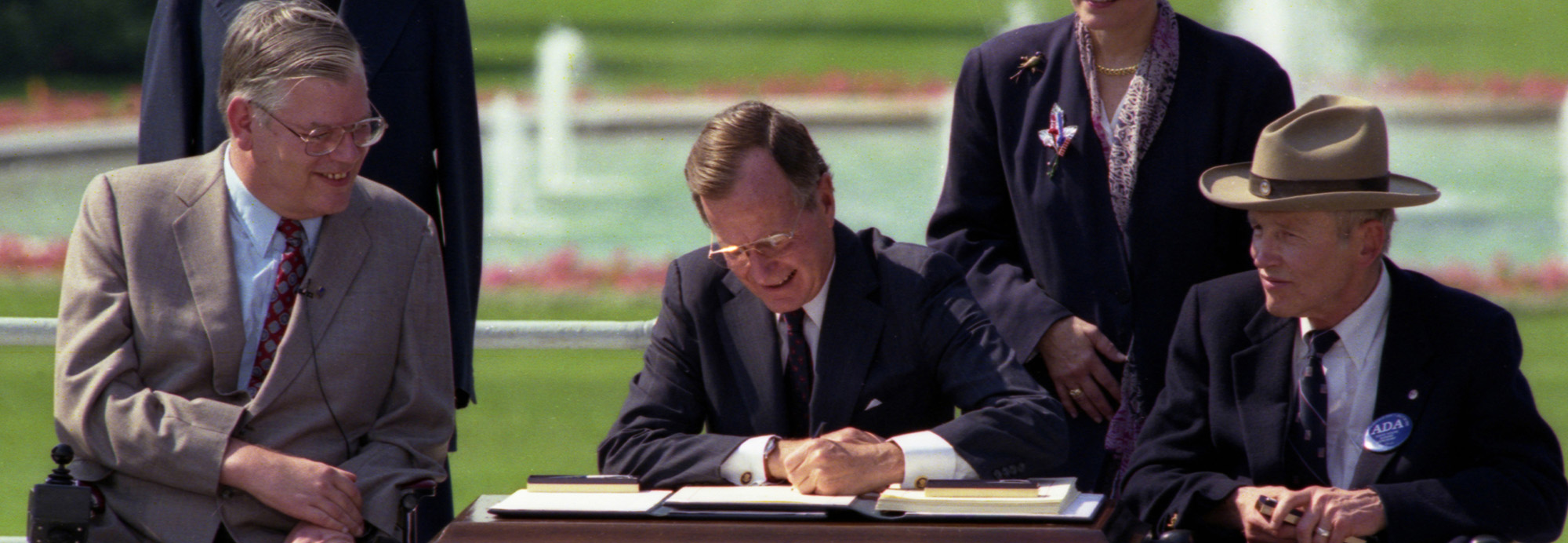
There had been two years of negotiations, lobbying, hearings, and testimonies in Congress.
A wide range of individuals and organizations had demonstrated in Washington, DC. Some generated controversy, but most captured the nation’s attention and its support.
On July 12, the ADA passed the House of Representatives, followed by Senate passage on July 13.
The White House signing ceremony took place July 26, 1990, in a history-making Rose Garden ceremony attended by thousands, many of them people with disabilities.
Influencing International Dialogues on
Disabilty Rights
Bob Dole complemented his national disability rights leadership with international efforts. The senator was especially interested in helping people with disabilities in the Soviet Union and Eastern Europe, as the Cold War entered its closing stages.
Working with the Soviet Union
In 1981, Dole and Representative Larry Winn of Kansas sought President Reagan’s support for coordinated advocacy by the United States and the Soviet Union in the International Decade of Disabled Persons.
When Soviet leader Mikhail Gorbachev had a summit meeting with Reagan in 1988, Dole sought to place disability issues on the agenda.
A Special Guest
When the US Senate passed S.933 in 1989, a special guest from the Soviet Union was in attendance.
Ilya Zaslavski, a textile research scientist with a disability, traveled from Russia to witness the proceedings. Zaslavski’s election to the Congress of People’s Deputies in Moscow had gotten Bob Dole’s attention.
During his campaign, Zaslavski spoke out for “the powerless,” a group that included people with disabilities and the elderly.
Representing the Dole Foundation, Paul Hearne went to the Soviet Union in 1990 to participate in seminars sponsored by Design USA. Hearne and members of other US disability advocacy organizations encouraged investment in wheelchairs, access equipment, and employment and job training for people with disabilities.
New Law, New Context, New Challenges
The early 1990s continued to bring challenges and changes to disability issues, advocacy, and politics.
From “Restoring the American Dream”, The Republican Platform 1996.
Effects of aging, and of illnesses such as cancer and diabetes, are relevant to ADA coverage if they fall under the law’s multipart definition of disability.
Disability Research
In August 1990, the University of Kansas dedicated the Robert J. Dole Human Development Center, in honor of Dole’s disability advocacy. The Dole Center is home to research and training centers related to disability and aging.
Cancer Awareness
As a prostate cancer survivor, Bob Dole testified before Congress about prostate cancer awareness and prevention in 1997 and 1999, bringing attention to potentially life-saving screening procedures.
Men's Health
As a spokesperson for Viagra, a prescription drug he used during research and development stages, Dole made TV commercials and gave speeches on men’s health issues. These broached sexuality, disability, and aging in a humorous way and brought attention to prostate cancer and related conditions.
Prescription Drug Advocacy
In 2006, Dole embarked on a US speaking tour to inform citizens of a new Medicare prescription drug benefit policy.

Senator Dole testifying before the Senate Special Committee on Aging, September 1997
-Bob Dole, speaking about the Prostate-Specific Antigen (PSA) test, in his testimony before the Senate Special Committee on Aging, September 23, 1997
Dole has advocated for wounded service men and women directly and through related organizations.
Wounded Warrior Project
In 2007, President George W. Bush selected Dole and former US Health and Human Services Secretary Donna Shalala to cochair the President's Commission on Care for America's Returning Wounded Warriors. The commission evaluated medical care for US soldiers returning from Iraq and Afghanistan. Assessing conditions at Walter Reed Army Medical Center was a high priority for the commission.
For their work on behalf of wounded and disabled veterans, both Donna Shalala and the Wounded Warrior Project have been recipients of the Dole Institute of Politics’ Dole Leadership Prize, which bears a $25,000 award.
The Elizabeth Dole Foundation
Senator Elizabeth Dole, former US Senator from North Carolina (2003-2009), established Caring for Military Families: The Elizabeth Dole Foundation in 2012. Senator Bob Dole serves on the Foundation’s national advisory board.


In December 2012, Dole appeared on the floor of the US Senate to support ratification of the Convention on the Rights of Persons with Disabilities (CRPD), an international human rights treaty adopted by the United Nations.
Dole’s appearance garnered significant media coverage, as did the Senate’s failure to pass the CRPD.
At present, the CRPD’s status in relation to US ratification remains unchanged, but Dole’s efforts to garner support for the treaty continue.
The Leadership Conference on Civil and Human Rights presented Dole with the Hubert H. Humphrey Civil and Human Rights Award for “selfless and devoted service in the cause of equality” in 2015.
Inspiration From the Past
For Change in the Future
In 1945, Bob Dole confronted life as a person with a disability. He became his own leader during his recovery and began to identify opportunities to improve life for others.
One early effort was his draft of an eight-page letter and questionnaire, in which Dole calls attention to the “inadequate” care he and other veterans endured in US Army hospitals.
 Page 2
Page 2
Dole wasn’t merely complaining. He wanted all disabled veterans to get what they had earned—“the best medical attention possible.” To achieve this goal, Dole sought help with gathering evidence of poor hospital conditions and going public with these facts.
Dole, who learned to write with his nondominant hand, composed this document, likely in 1949. This letter excerpt captures several of Dole’s defining traits at a pivotal time in his life. Dole communicates pride as well as humility. Referring to hospital “inmates” and bungled surgical operations, Dole reveals his sharp wit alongside his determination to improve the situation.
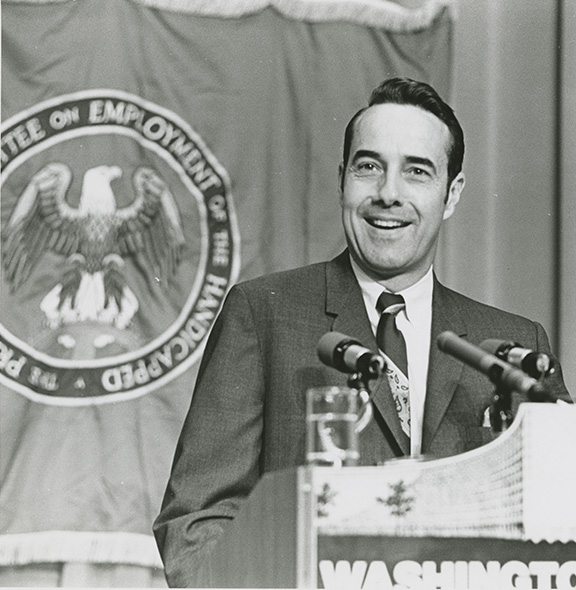
Senator Dole delivering keynote address
President's Committee on Employment of the Handicapped, 1969
- Bob Dole, in his forward for the book Changing the Rules, by Frank Bowe
As we commemorate the ADA’s twenty-fifth anniversary in 2015, we are inspired by Bob Dole’s decades long leadership on behalf of people with disabilities. Though the ADA has achieved much, its work remains urgent and unfinished. Through acts both large and small, we can all take — and make — opportunities to enable positive change in our society.
There are many reasons why the ADA continues to be relevant to the lives of all Americans. How do these issues relate to your life or those of family and friends? What can you do to address these problems in your community and beyond?
